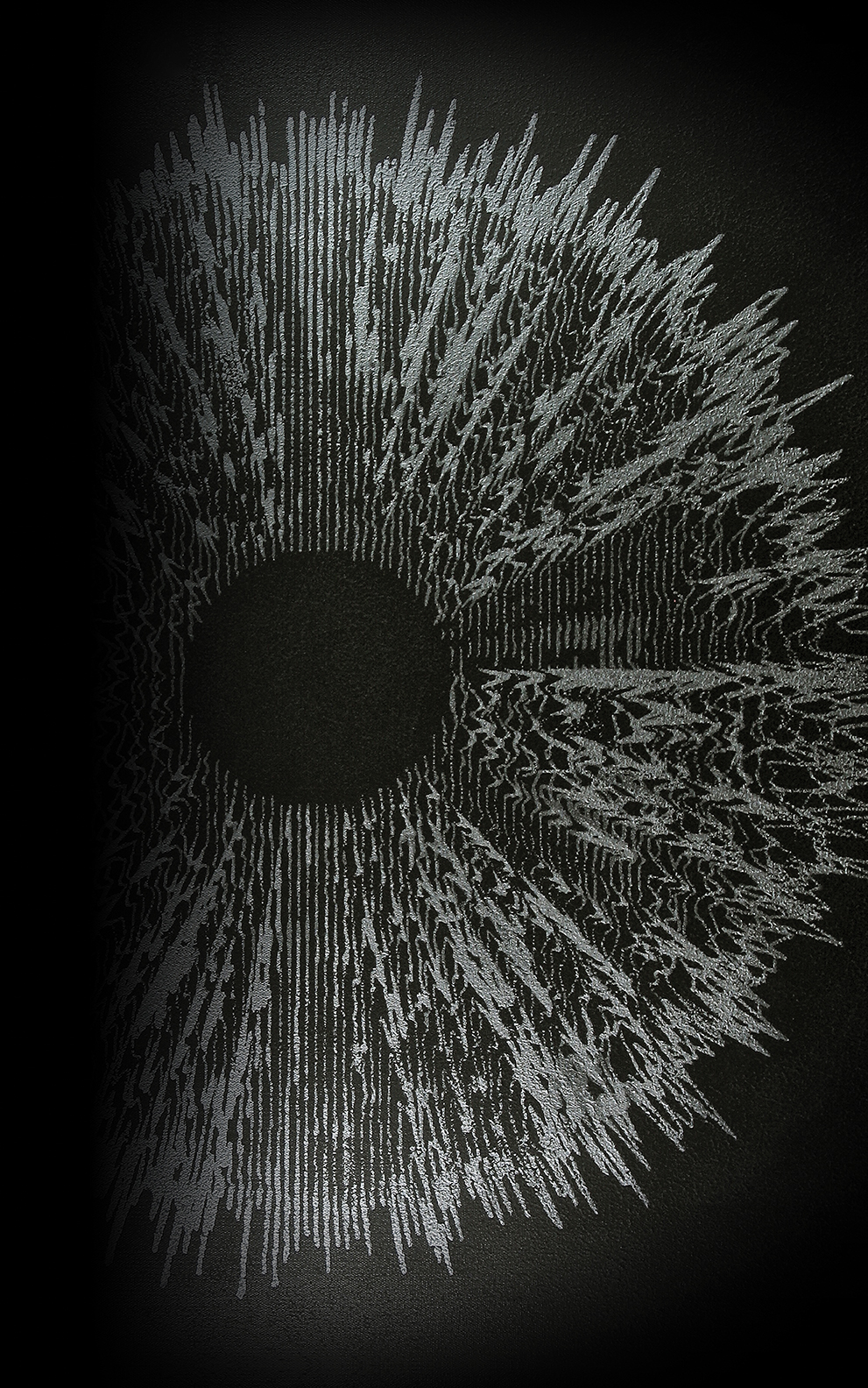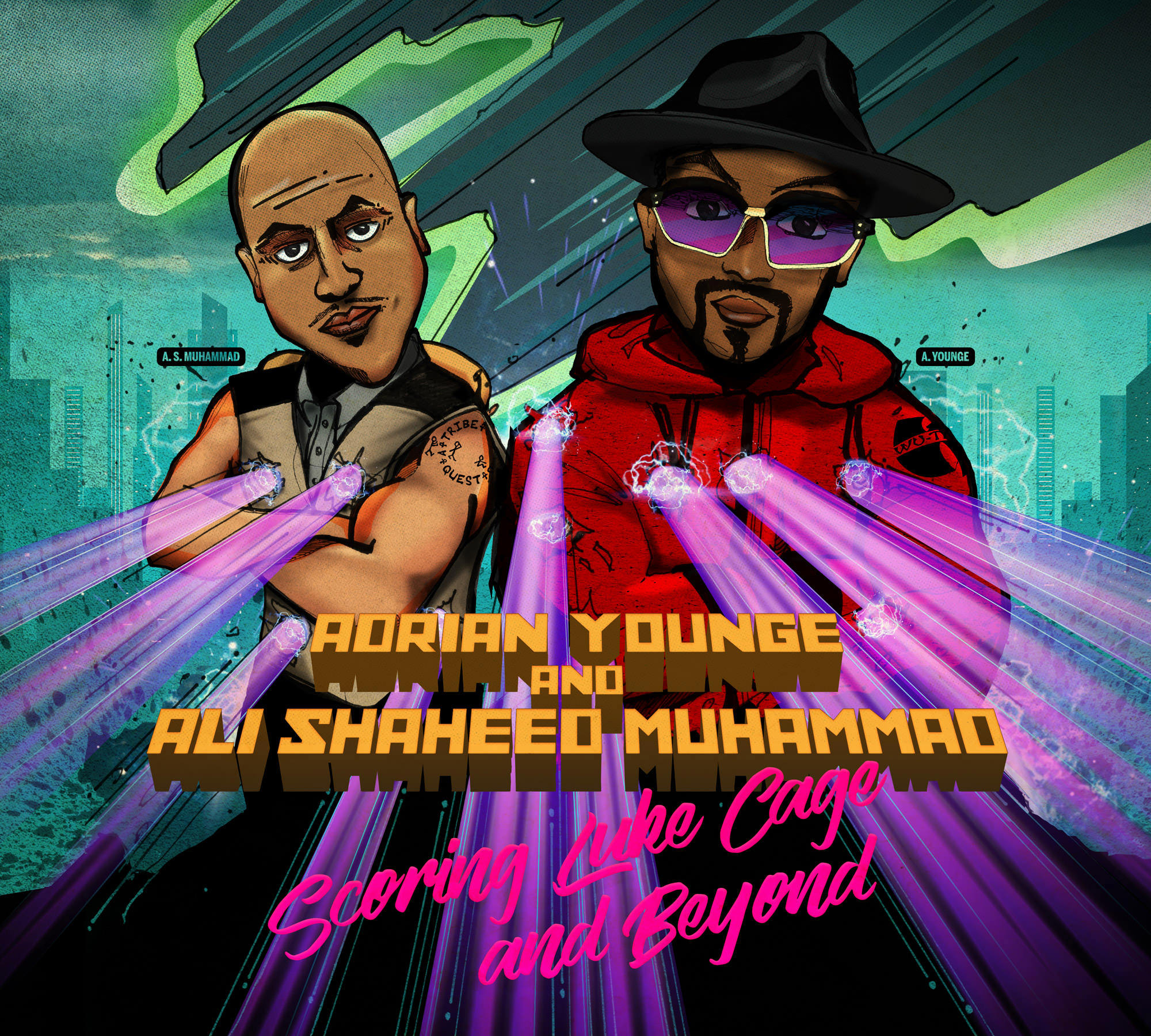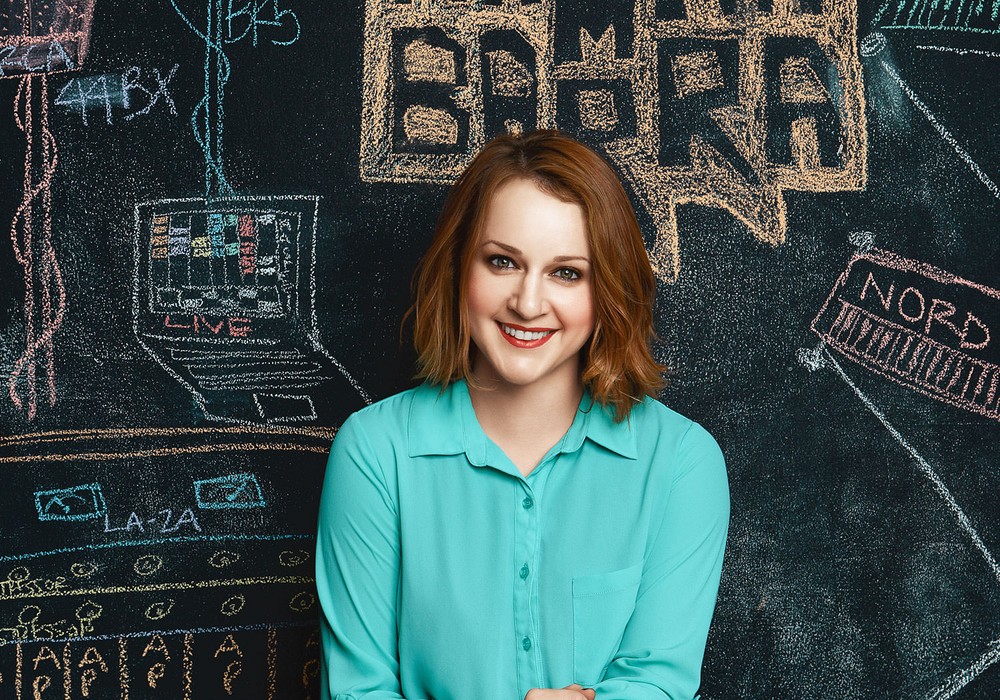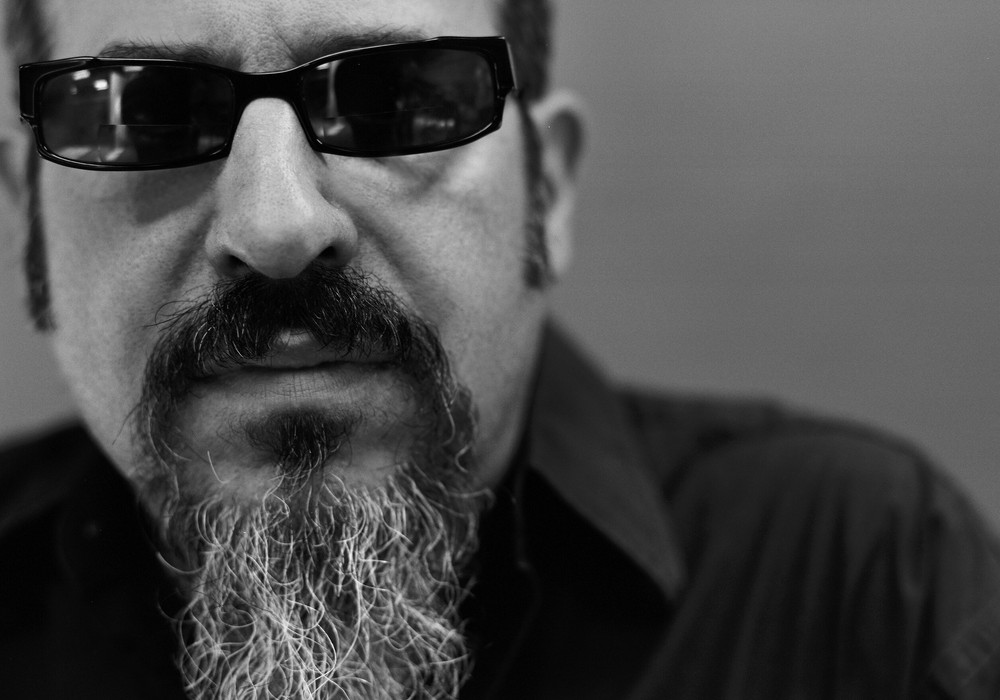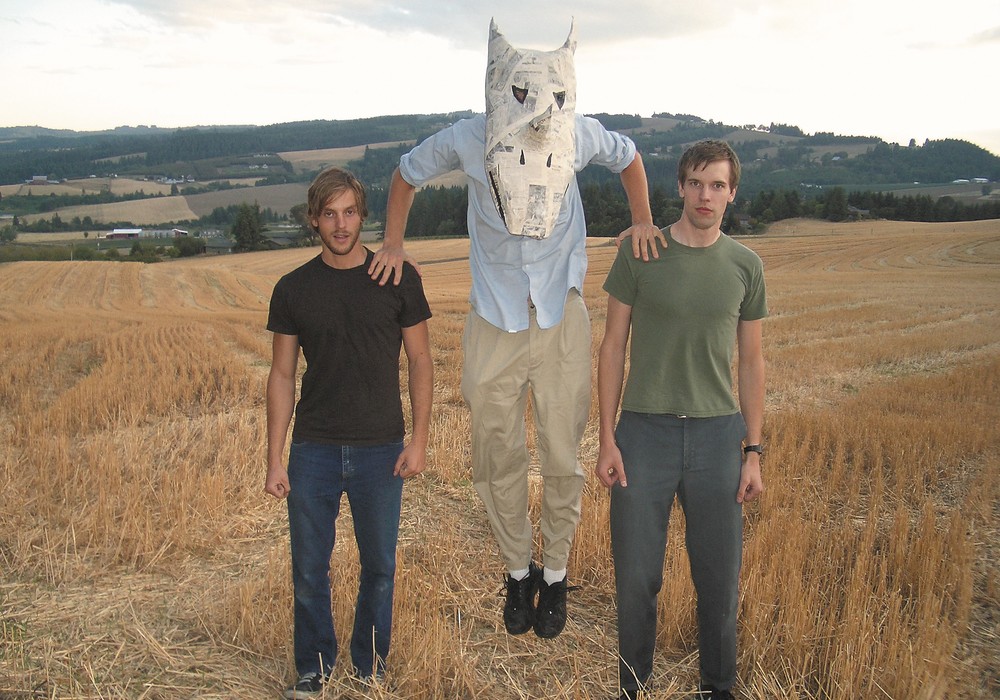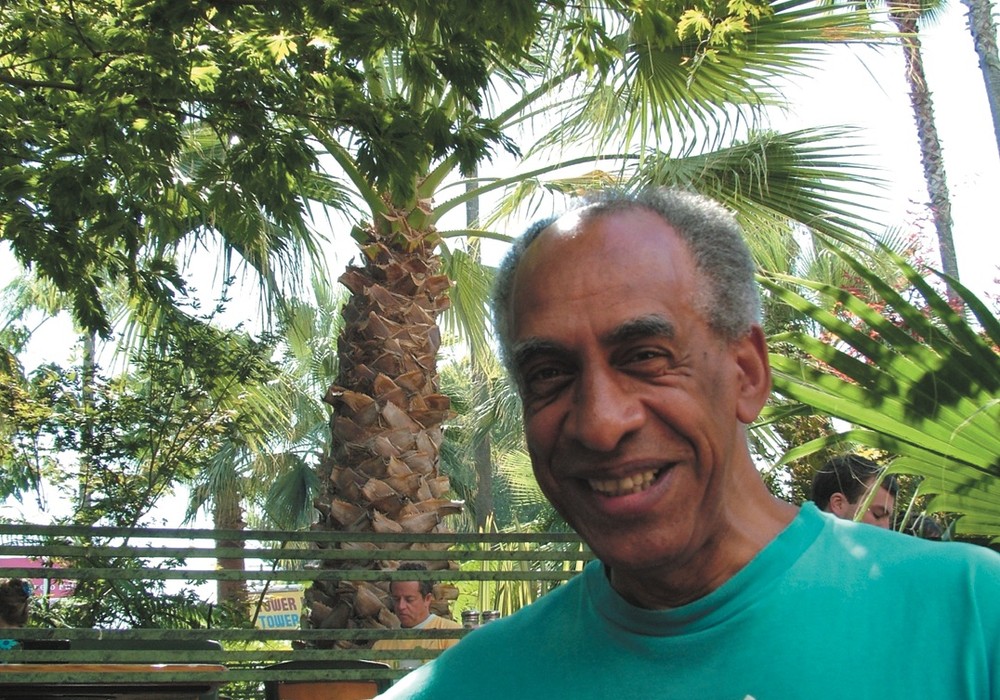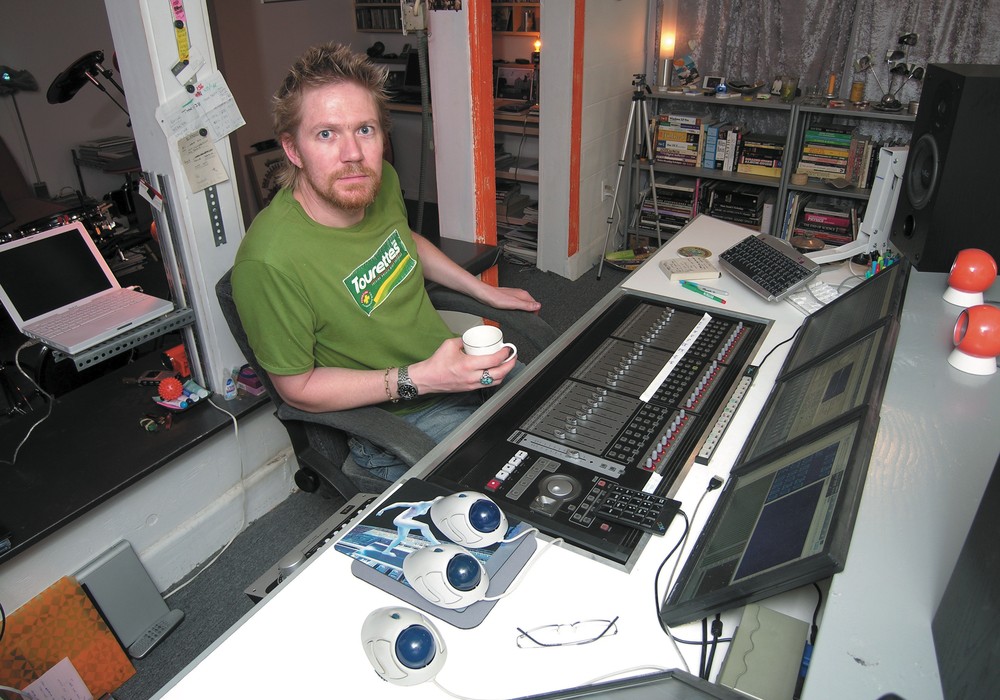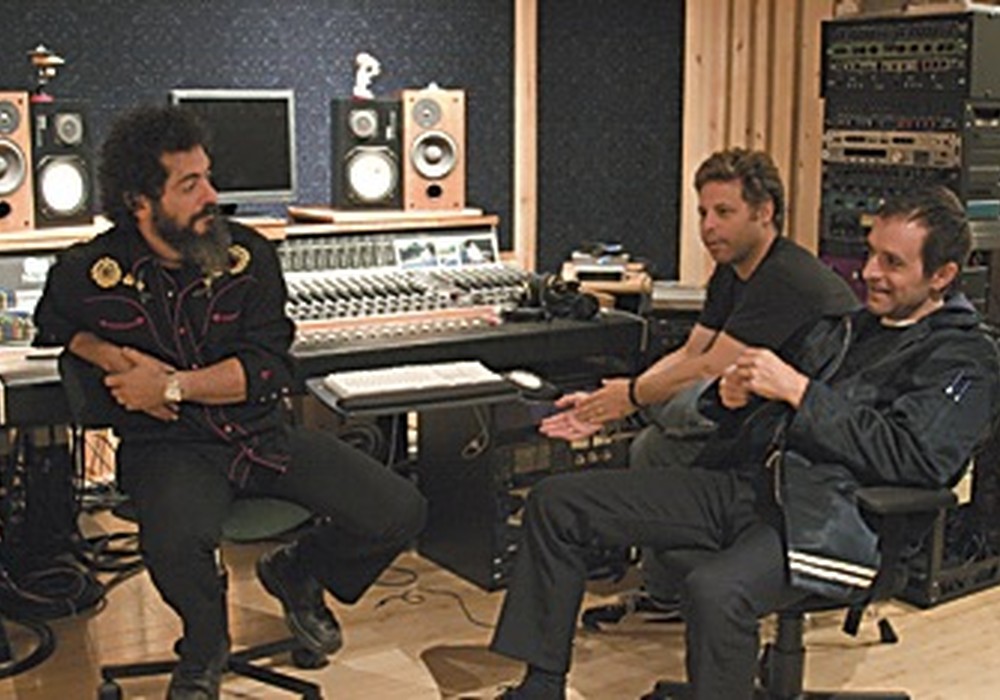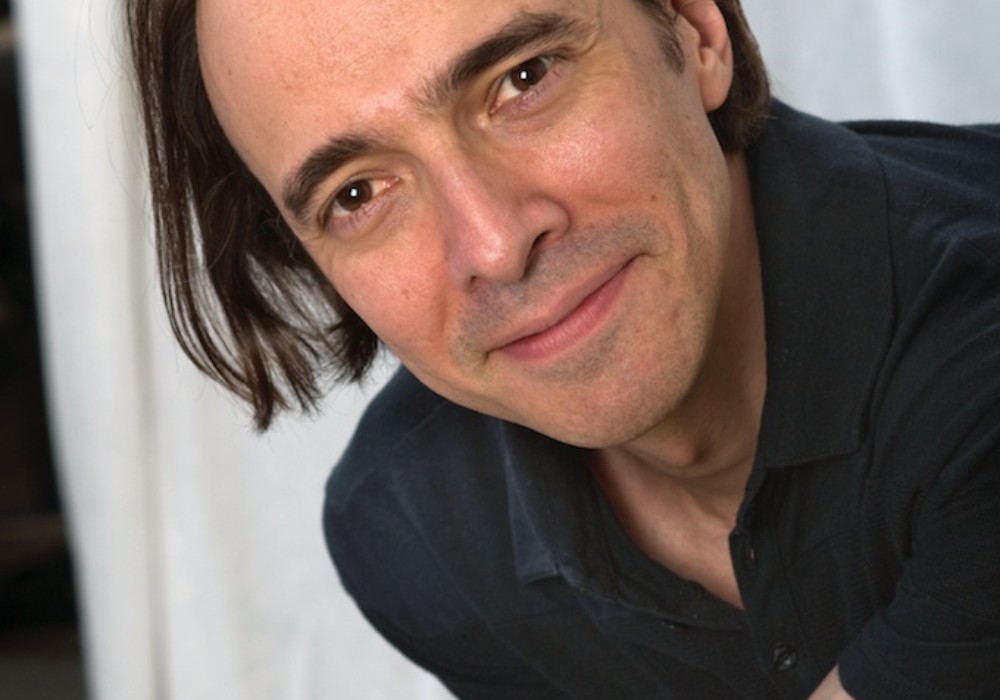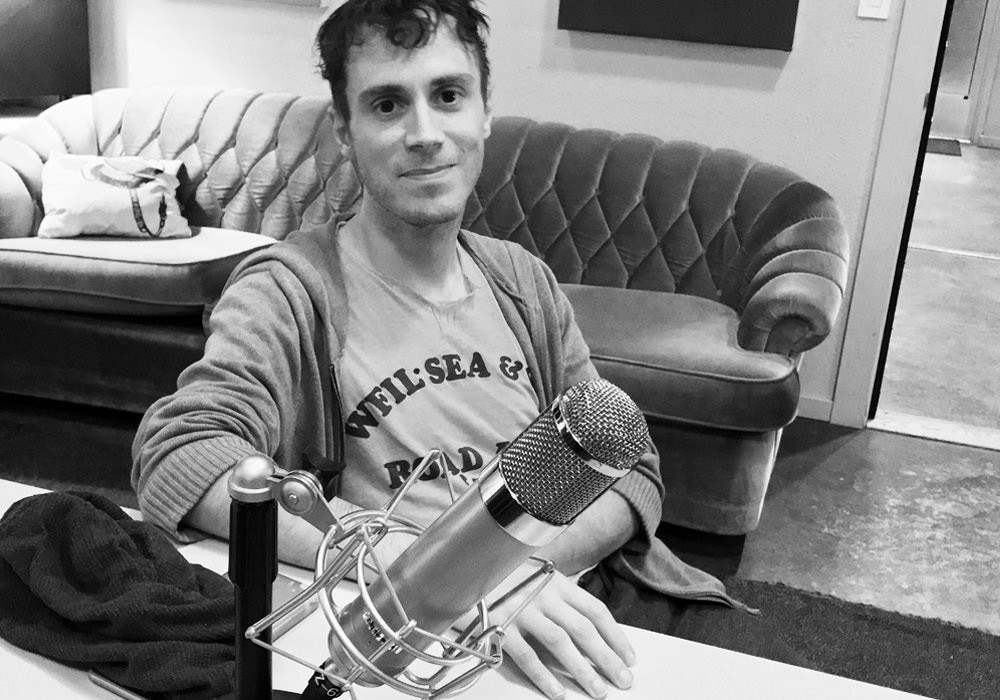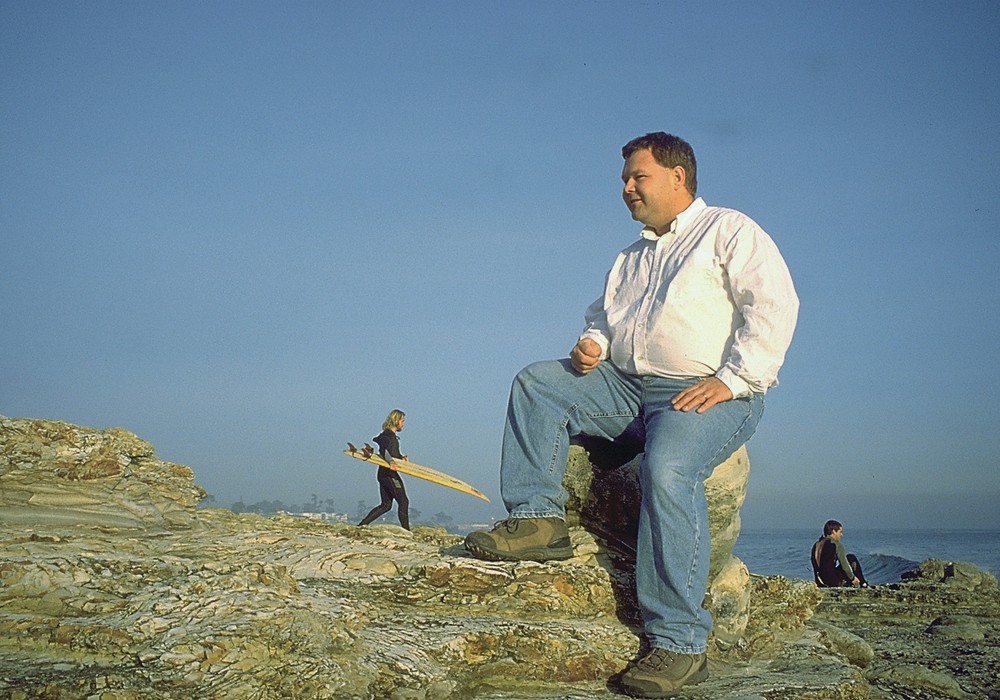Adrian Younge and Ali Shaheed Muhammad are established artists and producers in their own right, and each have contributed to an enviable stack of recording projects including A Tribe Called Quest, J Dilla, Jay Z, Bilal, Ghostface Killah, Lucy Pearl, The Ummah, D’Angelo, and many more. The two teamed up recently to collaborate on the soundtrack to the Netflix series, Luke Cage. I caught up with Adrian and Ali to chat about film scoring, vinyl, and the different doors we walk through to music production.
Can you tell me a little bit about how the collaboration on the project for Luke Cage came about?
AY: We got approached by the showrunner, Cheo Coker, for Luke Cage. He asked Ali and myself, simultaneously, to score an upcoming black episodic series that he was doing for Marvel, via Netflix. It felt too good to be true, and then it all came to fruition. We just started working.
Was it based on your previous collaborations?
AY: He was unaware of our collaborations, but he was aware of our previous works. He had interviewed Ali.
AM: In ‘92 or ‘93.
AY: He already had a relationship with Ali. I didn’t have any relation with him. It was funny that we had already started collab-ing and that he didn’t know we were collab-ing when he hit us up to do this.
Luke Cage has a great soundtrack. A lot of it has a ‘60s soul influence. What was the impetus for going that direction with the music?
AM: I think the basis of it was hip-hop. Cheo had mentioned that, in his mind, it was more like a ‘90s hip-hop era. Luke Cage is a fan of hip-hop. But beyond that, it was more the source material that a lot of the classic hip-hop – what’s considered the “golden era of hip-hop” from the early ‘90s – had sampled. A lot of that music [from that era] was the foundation of jazz, from the late ‘60s to the early ‘70s. A thing about Adrian’s sound is that he also primes his music off that source material from the same time period. We wanted to make sure that the music stood out, and that it stood for the characters, as one would do that when you’re creating a score. But we also wanted to make sure that the music was classic, and especially referenced the music that the hip-hop producers had sampled from. So we looked to people like Isaac Hayes, Curtis Mayfield, Marvin Gaye, James Brown, Ennio Morricone, and Bernard Herrmann, and sculpted what we thought was something pretty special for the characters.
It’s interesting that you mention Bernard Herrmann. What particular film scores did you guys draw from as inspiration as you were working on Luke Cage?
AY: We both love film music. Personally, my favorite type of music is old soundtracks, preferably European soundtracks from ‘68 to ‘73. It’s hard to actually say what films influence me, because I don’t even know how to pronounce the titles of these films! I just know the music. It’s also music from the blaxploitation era, like Super Fly, Shaft, and Trouble Man. It’s just great, classic music that became part of what we now view as vinyl culture, and what hip-hop used as source material to search out, find the breaks, and make derivative music from. It’s an amalgamation of all those perspectives to make this. Like Ali said, you’ll find the hip-hop in it, but you can also find the old psyche in it. You can also find the old classic soul in it. You could find the old cinematic feel. We want to put that all together and make it one world for Luke Cage.
How do you guys collaborate?
AM: The way that we pretty much worked was we’d go into a spotting session. That’s when we’d sit with the executive producer, some of the executives from Marvel, the music supervisors, a music editor, and us. They’d go over the entire episode and lay out places where they want music. Cheo would mention a kind of feeling that he was looking for in a particular scene, and then we would go to our respective studios, look at the screen, and get to work. There wasn’t really too much of a planned process. We had a lot of work to do, and we got to it. Adrian would start something, and I’d go to the next section and start the next area, or vice versa. We’d call each other a lot when we weren’t working together [in the same studio] and be like, “All right, this is where I’m at.” We’d check off, or give each other notes about it. There were times that we worked together as well.
Is it pen to paper, or do you have main instruments that you write on?
AY: Well, we’re both multi-instrumentalists. Sometimes you can write songs on drums and do the melody in your head. Sometimes you want piano or guitar, so you write that way. A lot of times it’s based on what the feeling is. When we would see something [on screen], we would think about what we felt. We used certain instruments to further define characters within the series. Every time we saw something with Cottonmouth, we made sure you always heard a Fender Rhodes electric piano for him. When you’d see the character Diamondback, we used opera singer Brooke deRosa. That’s kind of his thing, you see? So depending on what the scene is, we’d look at our weapons, figure out what weapon we wanted to use, and then we’d write from that perspective. If we weren’t writing something specifically for a character, then we’d go to the general, “What do we feel like writing on?”
How do you take away what you feel about the character, and what they’ve given you about their personality, without music, and translate that into music?
AM: There are certain instruments, which I think may lend more to certain emotions, just in sound. Then there’s also the feeling of it; what you add to it. It really depends on what’s happening in the scene at the moment. There are lots of times, for example, where Luke was pretty calm. For a superhero, there wasn’t a lot of dazzle and fighting from him. I think a lot of the dynamic of Luke was internal fighting. He didn’t consider himself to be a superhero. When Pops, one of the early characters, would strengthen his power, he always felt a certain way about it. How do you take a superhero and bring out that dynamic? Everyone’s expecting someone who has bulletproof skin and all this strength and power, to be this raging, kickass kind of a superhero all the time, but there was a lot more depth to Luke. It was a matter of understanding in scenes where he’s more contemplative, where he’s being reserved, and where he’s questioning his purpose. “How do we do that?” To really say “how” is a challenge, but it’s just being aware of the character, as well as understanding his development and growth. Using that as an opportunity to have a slow sort of sound and process that’s moving as slowly as he’s developing; but then, as he’s growing into wanting to stand up for the community, the music elevates as he’s elevating and embracing his superhero aspect. There are a few things that we did to try to follow that.
Both of you come from making records in a more traditional sense. Whether that is a hip-hop production, or a band going in to make a record, what’s different about the approach to a soundtrack?
AY: When you’re an artist, you don’t have a boss. You make music. You put it out. When you’re scoring, you make music and you’re trying to enhance the visual. Then you have to ask your bosses if this is okay. That’s one big difference. It might not seem like that big of a deal, but it is. You’re not only thinking about what you think is right. You’re thinking about what the entire team thinks will work, as well as [whether or not] those people say “yes” or “no.” That’s one difference. Secondly, your compositional perspectives and arrangements change. A scene can be a minute and thirty seconds, and you write a riff that you want to turn into a full on three-minute song, but you have to get to that sweet spot pretty quickly. You can’t have a long intro, and the sweet spot has to land exactly where the sweet moment happens. It changes your criteria for arranging, but then it pushes you into doing new and different things. Those are some of the differences.
AM: As an artist, when you’re making music, often there’s something you may experience, or something you may witness, that sparks the emotion that provokes the thought that you turn into a song. When you’re scoring the thought, and the emotion, is already established. Now you have to dial into that emotion and be inspired, based off of that. You may hear a melody in your head, and that melody could carry you through a gamut of emotions, or maybe an idea of something that you want to say lyrically in a song, and that sparks how you develop it or you create a melody. As a musician, as an artist, that’s what we live for; that internal feeling to go and create. As a composer, it’s totally averse to the process of making music. It’s kind of like, “How do I find that inspiration?” It’s already established, as Adrian said. Then you have bosses, so it’s a matter of, “This is not internal.” Although you make it internal, based off of what’s being conveyed and the communication in the scene. But there’s something else extra that you have to really dig into, in order to develop what you hope will evoke or help the emotion that’s being displayed. You want to make sure that you are enhancing it properly enough so that the bosses are saying, “Yeah, you’ve got it!” That’s the difference.
How does the scoring influence the records that you’re producing, or music that you’re working on that’s more artist-based?
AY: Ali and I spent about nine months working on the Luke Cage score. As Ali noted, we had a spotting session with the director/executive producer to talk about what needed to happen to make each episode what it needs to be. On average, about four days after that, we’d have to turn in our initial drafts. We wanted to try to make the best television score ever. That was our mantra. Instead of one person on one keyboard, it’s two people on a bunch of different instruments trying to create something very special. We knew we had to do this in about four days, so it was one of those things that we’d never done before. We proved to ourselves each episode that we could do this, and that we could turn it in in time. It just catalyzed our ability to compose and produce. It streamlined our processes in a way where, when we were done, it was like, “Let’s work on some stuff! It’s not going to take a year to make an album. Look how much music we just made in nine months!” It changes your perspective, because it’s like going to boot camp. Then, when it’s over, you’re like, “Wow, I didn’t even realize I had this in me.”
AM: One of the pleasures that Adrian and I had with this score is that we were allowed to work with a 30-piece orchestra. We were composing music, and then giving it to Miguel Atwood-Ferguson to orchestrate. I had worked with a string session before, so I know what that felt like. It’s so magical. I wish that anyone who records music, or (anyone, really) could sit in on an actual orchestra session. It’s really transformative. You feel the music in such a completely different way. The first day, Adrian was experiencing that and he just lit up. I knew that feeling that he was going through. He just whispered to me, “We can never go back now. Everything else has to be like this.” I laughed, because it was like, yeah, those are the things that dreams are made of, especially in this time period when people don’t use orchestras. Speaking back about the source material, we had all these classic hip-hop records that have inspired us, and damn near every recording had an orchestra, in some form or fashion. That was the thing. If you made music, you were going to have your strings, your woodwinds, and your brass. It just adds another layer of feeling and emotion when you hear that music. That’s the goal for everything else we’re doing on the artist’s side, [in order] to make sure that we can bring everything we feel and experienced during scoring to the regular music-making part of what we do.
It’s an ultimate form of collaboration. The Beatles are a good example. What would “Yesterday” be without strings on it?
AY: There are levels. Exactly.
I’m curious what your first recording experience was?
AY: My parents bought me an [Akai] MPC-2000 and a Tascam 8-track Portastudio cassette recorder in ’96 for Christmas. That was my jump into being serious.
How old were you?
AY: I was 18. But I’d say the job really started when I got my first [Fender] Rhodes, about a year and a half or two years later. That’s when I realized I had something to say with instruments, outside of just a sampler.
AM: For me, it was 1982 or ‘83. My uncle had a few pieces of equipment. There was a Tascam 4-track cassette multitrack, a Korg POLY-61 keyboard, and a Korg drum machine. The biggest part of the set up was a sampling digital delay unit. I think it had a four-second sampler on it. That was really the unit that changed my life.
Were you the only guys on the block with recording equipment, and you ended up working with your friends and collaborating?
AY: One of my best friends at the time had an [E-mu] SP-1200 [drum machine/sampler]. That’s when it really started. I would go to his house all the time and mess with that. But my first piece of gear was the [AKAI] MPC [sampler]. I had some friends who had gear, but not actual instruments. Hip-hop cats didn’t really have instruments. In my high school it was more like cats that were into grunge. They had instruments, but none of the homies I hung out with had instruments. They had samplers and records.
But were you collaborating?
AY: No. I knew one other guy who was a drummer, and we would do music, but it was really mostly me, at that time, outside of sampling. As far as just playing instruments outside of sampling, it was pretty much just me.
Adrian, I wanted to talk a little bit about your Black Dynamite score.
AY: Go for it!
I was just curious about how you prepared musically. It’s mixed in a way that is a lot more modern than a Blaxploitation record would have been in 1970.
AY: That movie was released in 2009. I was the film editor as well. I edited the film and did the score. I was able to adjust my film edits to my score, or adjust my score to the film edits. I would edit during the daytime, and do music during the nighttime. Everything I do is analog, so it’s still all analog. It was the first time I had to transfer my music digitally. I didn’t know anything about analog-to-digital converters at all, so each individual track from my 2-inch tape I recorded to a CD burner and then put it all together on a video editing program. I would do all my EQ’ing on my hardware, but then I had to transfer it, because I had to submit it for a film. They needed stems, and I had to figure it all out at the last minute. I was used to just mixing on the console and saying, “Here’s the 2-track.” So with that mix, even though I was making music that’s supposed to be for a period film, I wanted to do something where it’s as if I’m going back in time to compete with those composers between ‘72 and ‘74, yet I wanted to make something that the hip-hop community would perceive as being a part of the golden era. That means the drums should be a little fatter. The bass should be a little thicker. There should be some parts that just sound like they need to be sampled. Also, even though that was a blaxploitation film, I wanted to add other elements of where I wanted to go musically, which is getting more into European soundtracks and whatnot. There’s more psychedelic Morricone-like sounds that you would never see on an American-style blaxploitation film, even though a lot of that Morricone music was derivative of blaxploitation [soundtracks]. So I was pushing a lot of that in there and, like I said, coupling it with a modern perspective on analog sound. That’s basically the result.
What’s your approach to producing someone else’s record when it’s not your music?
AY: I exclusively work out of my own fully-analog studio. When people work with me, they come to my world, sonically. We meet each other with composition. I listen to the people I’m working with. I listen to their music and try to find the common denominators as far as what I believe it is that they love, so that when we get together I’m prepared to contribute to something that they like. Even though they’re coming into my world when they come into my studio, I want us both to be happy with what leaves.
How about you, Ali?
AM: First and foremost, I like to only work with people who have an open mind, and who are not interested in the “mold” process of recording. What I mean by that is to follow a formula for something that’s already been done, that pre-exists. I don’t necessarily want to work with someone who comes in and is like, “Well, this is something that you did and I like that.” I like that people are inspired and interested in working with me because of something that I’ve done, but [repeating] something that’s already been done, I tend to say, “No thank you.” It’s not going to work for me. I like to work with people who have an open process. I’m a music lover. I’m listening, and I don’t care if it’s [Gustav] Mahler or J Dilla. It could be music production from The Bomb Squad, production from Jimmy Jam & Terry Lewis, or Nine Inch Nails. I just love music. I like working with people who are interested in that range. I think one of the most important things a producer can do is to listen – to really understand the vision that the artist is trying to achieve. Some artists have no clue, and that’s usually not going to work either. I like to work with people who have an inkling of where they want to go with their art. Not just from a one-song basis, but to have a perspective on who they are, and where they intend for their voice to land in the world and in the realm of music. That usually is where fun creations happen, ultimately.
Adrian, can you tell me a little bit about your album, The Electronique Void?
AY: Yeah. I’ve always wanted to make a purely electronic album. Over the years, the context of electronic music has changed to the point where the connotation of electronic music is EDM. But there was a time when, if somebody was making electronic music, it was perceived as experimental music. I wanted to make a modern electronic album that hearkened back to those times. I wanted to make something that sounded like what a black Kraftwerk would have made around ‘72. This was a time when musicians were getting access to pro-consumer analog keyboards. You didn’t have to go to Universal, or pay $50,000, to have these instruments. You could actually use them at home with your tape machines. What people were doing – as far as recording electronically and then splicing up tape to make new rhythms and sounds – was absolutely astounding at the time. It was futuristic. I wanted to make an album that was akin to what they were doing; but for today, because most people don’t even understand the notion of there being this very early pioneering culture of electronic music that’s pre-’80s. That was my motivation behind it.
Part history lesson, and part great record.
AY: Thank you.
I got into record production from a band perspective, which is one door, and it sounds like you got into it from DJing and vinyl, which is another. I thought it was interesting that you said, “We had ‘these instruments’ so we did it this way.” It’s a different form of painting.
AY: Well, it’s crazy, because two nights ago I was with DJ Shadow [Tape Op #11] in my studio. We had a full conversation about this. What he was talking to me about was the fact that there are times where he wished that he had learned how to do stuff. I was telling him, “It’s never too late. You could always do it.” I started off sampling. When I started playing instruments, my friends were making fun of me. They don’t make fun of me now. I said, “Shadow, because of all the records you heard as a DJ, and as a producer, you know way more about music than the average producer, because of what you’ve studied.” I said, “When you were trying to make beats by sampling something, you would have a sound and a melody you’re trying to find. Sometimes you have to piece it together by getting this bass line here, this bass line there, this guitar riff here, and this riff here. But you’re always looking for something that’s in your head. But the fact that you have something in your head shows you, ‘Yo, you can compose!” I said to him, “It’s interesting, because I could make the argument that for you to do something like Endtroducing [DJ Shadow’s debut] is harder than it is for me to make an album. Everything in my head I can just do; I don’t have to find sounds. I have the equipment. I know the recording techniques. I don’t have to do any of that. You have to find parts through records, and compose it, and arrange it that way.” That’s difficult. In the search to make music, you’re just trying to become a better composer, arranger, and producer. If you start off with instruments, that’s one way to get into it. If you start with a sampler, that’s another way to get into it. They’re all instruments. You can make music on both sides. It’s not that much different. A lot of people don’t give enough respect to people who sample, but that’s because there’s a lack of knowledge as far as knowing what it takes to do that. That’s my take.
How about you Ali?
AM: It is fascinating. They say that necessity is the mother of invention. The other side of saying “necessity” is that it’s also deprivation; being deprived economically and unable to get an instrument, and being deprived of an environment – especially in an urban setting, which is way different than a suburban setting. In a suburban setting, maybe there’s a row of homes and some kids who have a few instruments, and they come together. In an urban setting, especially specifically from a New York experience, you’ve got 16 stories of people living on top of one another, and there are no instruments in that building at all. Without that, and still having this desire to communicate as humans do in a way of song, what everyone did have were records. You can pile into one person’s house and start off with ten records. If you have ten people, everyone brings a record. Now you’ve got a lot of records you could DJ or throw a party with. My relationship with making music has come from being in a basement, where we all brought our records in and DJ’d. It’s like, “All right, I’ll cut this back and forth, and now I’m venturing off into making music. Can I borrow some of your records for a minute? I heard something in your set that I didn’t have. Now, if I could just hold on to that for a minute, I’ll go home real quick, sample these up, and give them back. I’ll go into Mom’s records a little bit, because I know she’s got these 45s.” You spend a lot of time, I guess the same amount of time one would spend as an individual practicing oboe, clarinet, saxophone, or whatever. You’re spending time going through those records trying to find that moment that you can do something with, that you can build on, and to repeat it again, and again, and again. It’s like a mad scientist. If you have a piece of music, and you play it over, and over, until you get it right, at some point you’re going to get it right; and then you can move on with that. When you’re sampling, there’s no getting it right. It’s like, “Okay, I’ve got that one part down. I’ve got to go back into the well to try and listen to all these records – 24 minutes on one side – looking for that right break.” You can go through 500 records and still come up with nothing. That’s aggravating. But there’s still something in it that drives you and keeps you going. It’s definitely a different, dedicated process. I will say, as a person who started off that way, there was joy in it. There still is. Looking and digging; it’s like the modern-day playlist. You find something on there that’s connected to something else. It’s connected to another sound, producer, or player. You can just do that forever. Through all that there was joy in the music discovery; in discovering producers, and even cities. The greatest joy I had was working with Tony! Toni! Toné!, programming a beat for them, and watching them – without any discussion – listen to the beat, play it instantly, and follow along with each other. That completely blew my mind. I left that session going, “I have to learn how to play.” There are a lot of records that I listen to and sample that I dream, “What were they thinking about when playing this? What were they thinking about when they played this chord?” To physically watch that, and see that it can be done, changed my life and made me pick up a bass. Nothing has been the same. You take what Adrian was saying about DJ Shadow. You take this knowledge of all these records, but now you know how to play. It’s like, “Okay, I’m going to try and play this John Lee Hooker style. I’m going to try to play this Stevie Ray Vaughan style.” That’s what you bring to it. You have this information that there’s a difference between John Lee Hooker, Stevie Ray Vaughan, or Jimi Hendrix. That’s what you bring to it.
I always felt like the biggest skill a producer could have was reference. When you’re listening to something, there’s something in your head like, “That would be so good for this.” I think both of your depths of knowledge of music is so apparent.
AY: Thank you, man. Thanks for caring.
AM: The records and the source material that we used as an inspiration, especially Adrian, has a process and way of recording from analog. Everything he does is to 2-inch tape. I’ve gotten away from making records like that. A Tribe Called Quest records were all made on 2-inch tape. Embracing technology, and its uses, and applying them. One thing I can say in making this record is that we found a happy medium between both worlds, of everything being recorded on 2-inch for Luke Cage, but also having the ability to bring in the right equipment from a technologically modern standard. It’d be kind of crazy to not mention that Universal Audio was definitely a part of that process.
AY: Absolutely.
AM: With Adrian, one thing I love about him is that he reminds me of Bob Power [Tape Op #60] in this regard. When Adrian is recording, he’ll say, “I’m pushing this through here. The reason why I’m pushing it through this EQ is because of ‘this.’” Or, “This is how I’m using this 1176.” He has this sharing, giving kind of process to his recording, which is gracious. I don’t know too many people like that. Bob Power is definitely one of those people. I learned a lot from sitting with Bob, just watching him. He would do the same thing. I’d ask him a question and he’d say, “Well, I’m trying to get here.” I retained a lot of the information that Bob taught me, but I didn’t have those pieces of gear. It wasn’t until the UAD plug-in series that I was like, “Oh, I remember using a Pultec to get a particular sound.” Now I can drop in this Pultec. We used to go crazy over making sure we had Neve boards in the room. Why? Because of the way everything sounds when you push it through there. When you turn up the gain, just one or two notches, it really makes a difference in how the drums are going to bang out. I have a room full of 1073s right now on my laptop.
Yeah. Otherwise you have to write a
big check.
AM: Exactly. I definitely wanted to say that Universal Audio helped in bridging that process.
It’s really about being creative, but it always helps if you have a great mic, an 1176, and a Neve console. But it’s really who’s driving the car.
AY: Right. I think this is all a subjective thing, too. Everybody’s ears are sensitive to different things. My ears are very sensitive to what I want to hear sonically. If I don’t hear what I want sonically, I won’t like it. I can appreciate and know how great something is. Not just good, but great. But it doesn’t mean it’s going to stimulate me. If someone’s ears are like mine, there’s just something I’ll [connect with in the music]. That comes from good equipment, and that good equipment could be a cassette recorder, or something that just makes it sound good for what it’s supposed to be. That’s just me.
Adrian Younge & Ali Shaheed Muhammed Playlist on Spotify
